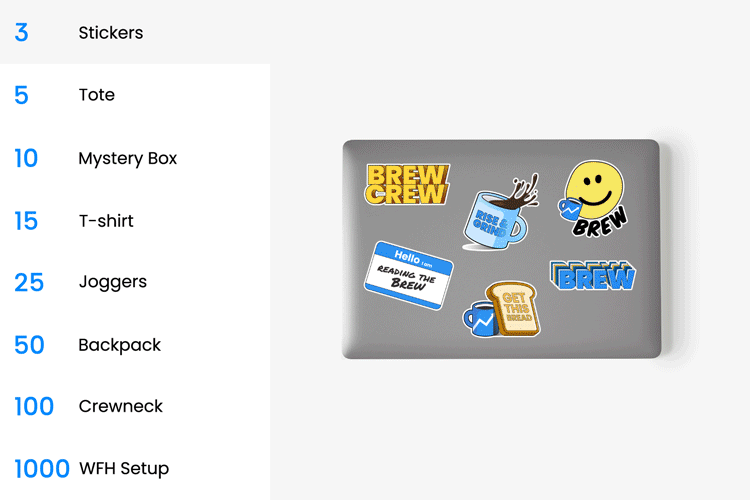Happy Thursday, everyone. We’d like to take this opportunity to spare a thought for all the AirPod owners who were affected by the National Wireless Emergency Alert test yesterday. And if you don’t know exactly what we’re talking about, do yourself a favor and do a quick search on X, formerly known as Twitter, after reading today’s newsletter. You won’t regret it.
In today’s edition:
—Jeena Sharma, Erin Cabrey
|
|
Oak and Fort
Inflation, a looming recession, lower consumer spending—many fashion retailers are seeing the impact of these factors on their bottom line.
But Oak + Fort, a fashion and lifestyle brand from Vancouver, Canada, which started as an online-only brand in 2010, has grand expansion plans, starting with the re-opening of its store on New York City’s bustling Spring Street.
While the brand originally did open a location in New York back in 2016, it eventually shut down, although the retailer continued to have both online and physical presences—more than 27 stores with 20 locations in Canada and seven in the US.
“We were so particular with this site and how we envision building it out as well…As it’s a flagship, we wanted to offer something a little bit different [such as] building out the stainless steel materials, the bench that we provide for where customers can hang out or really relax and just take in and soak up the experience that we’re providing,” Oak + Fort’s SVP of operations, Melorin Pouladian, told Retail Brew. “We hope that every store will have a little bit of the community feel and the cool factor.”
Keep reading here.—JS
|
|
Tesla advertises its cars as having a smooth ride, but following the prices for its vehicles has been anything but. Tesla has dropped prices multiple times in 2023, and then in April, it raised the prices of its two most expensive models.
Now, automotive industry economists and experts are left wondering: Is there a method behind Tesla’s up-and-down pricing changes?
Check out this investigation from CFO Brew to find out how the nontraditional car manufacturer’s sales and market share are expected to evolve.
|
|
Toys R Us
Macy’s is setting its sights on more small-format stores, while Toys R Us is betting big on fresh flagships, the companies announced this week.
Macy’s said it plans to expand its small-format store footprint with as many as 30 more locations, adding to the 15 small-format Macy’s and Bloomie’s stores the retailer has already opened. The expansion will begin next year and continue through fall 2025, Macy’s said, in off-mall locations in high-traffic areas, and in some cases replacing less productive stores.
The move is “one way we intend to harness the full power of the Macy’s brand to deliver sustainable, profitable sales growth for Macy’s, Inc. beginning in 2024,” Macy’s COO and CFO Adrian Mitchell said in a statement. Macy’s small-format locations are one-fifth the size of its department stores, with a curated mix of private label and branded products.
Keep reading here.—EC
|
|
John MacDougall/Getty Images
Birkenstock, the shoe Barbie fans will remember as the ultimate symbol of the “real world,” is taking some real steps in the very real world of trading.
The German footwear brand is seeking a valuation of as much as $9.2 billion for its IPO, it announced on Monday.
The company is aiming to sell about 32 million shares priced from $44–$49 each, and raise roughly $1.58 billion, per a filing with the SEC.
The retailer filed to go public in September and reported it earned 187 million euros in the past year.
Keep reading here.—JS
|
|
Today’s top retail reads.
There’s no rush: A new report has found Chick-fil-A’s drive-thrus to be the slowest among fast food chains, but that comes with more accurate orders and higher customer satisfaction. (Insider)
The final chapter: The number of companies that have filed for Chapter 11 bankruptcy this year is much higher than it was in 2022. It’s a sign companies are facing unique challenges in the post-pandemic era. (Retail Dive)
The whole 9: Footwear brands are seeing more revenue through wholesale partners, but the strategy includes doing business with fewer of them. (Glossy)
|
|
The numbers you need to know.
Grocery retailers face a number of challenges in an evolving landscape where shopper expectations are of critical importance. But grocers also face the challenge of inflation having an outsized impact on their business with margins being extremely thin.
Retail optimization company Relex surveyed more than 105 grocer retail professionals, and found that more than half (58%) of grocery retailers identified inflation causing price pressure as their biggest problem.
- That was followed by hiring, training, and retaining a workforce (47%), and maintaining on-shelf availability because of supply constraints (43%).
Over the next 12–18 months, grocers are most concerned about collaboration with suppliers and CPG partners (55%), increasing their profitability through online channels (52%), and optimizing their supply chains (46%).
“As supply chain uncertainty continues to loom, the relationships between retailers and consumer goods companies are becoming critical. Customer engagement within online channels continues to grow, and limited supply requires more transparency across the supply chain network to keep shelves stocked,” the report states.
Nearly three-quarters of respondents (74%) said that fresh food products are important or very important to their businesses. The report said that issues like maintaining a strong workforce and supply chain are particularly important for grocers that rely on fresh foods because inefficiencies can cause higher rates of spoilage, out of stocks, and, in turn, reduced customer satisfaction.
- More than half (54%) said that spoilage from fresh food products accounts for 1.5% or less of yearly revenue.
|
|
ADVERTISE
//
CAREERS
//
SHOP
//
FAQ
Update your email preferences or unsubscribe
here.
View our privacy policy
here.
Copyright ©
2023
Morning Brew. All rights reserved.
22 W 19th St, 4th Floor, New York, NY 10011
|
|





